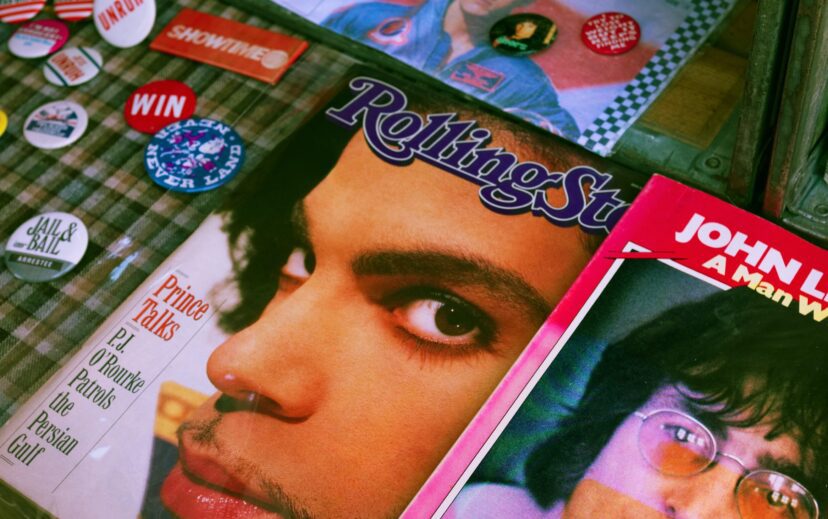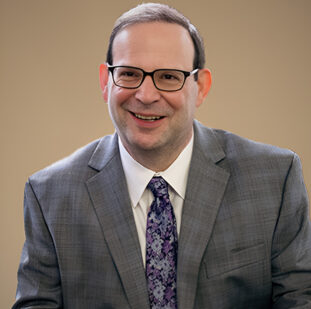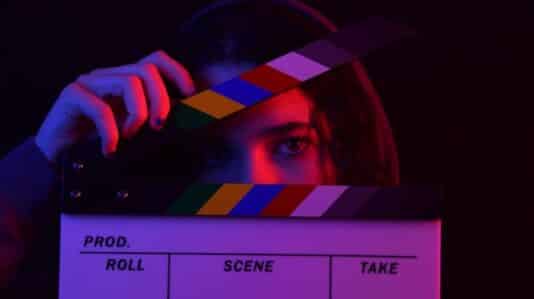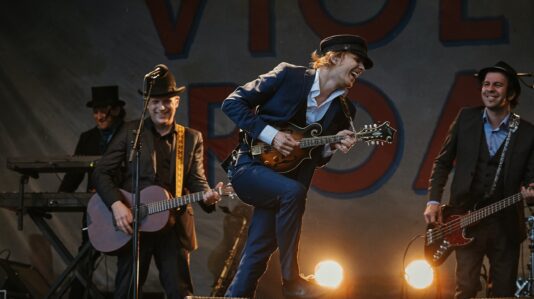In my previous post, I sped through the history of fair use from Justice Story to the current statute, and strolled through a few examples of the analysis that’s typically used when applying the four factors of Section 107 of the Copyright Act, the statutory test for fair use.
But while courts always construe the statutory factors, the “real” fair use test – at least since the mid-1990s – is nowhere in the statute. Instead, the dispositive inquiry is whether the usage is “transformative.” So, what is “transformative use” and where did it come from?
Transformative Use, Music and Parody
The “transformative use” test comes from an influential 1990 Harvard Law Review article by Judge Pierre N. Leval. But since neither articles, books nor blog posts have any legal effect unless adopted by a court (or legislature), it’s the Supreme Court’s casting of Judge Leval’s concept that defines “transformative use.” In the 1994 case, Campbell v. Acuff-Rose Music, the high court, citing the Leval article in its analysis under the first factor, defined “transformative use” as follows:
The central purpose of this investigation is to see, in Justice Story’s words, whether the new work merely “supersede[s] the objects” of the original creation (“supplanting” the original), or instead adds something new, with a further purpose or different character, altering the first with new expression, meaning, or message; it asks, in other words, whether and to what extent the new work is “transformative.” (Citations omitted).
If that sounds kind of vague, it is. And while ambiguity is often cultivated in the arts, it’s not so good in a legal standard. And as applied, it sometimes seems like a transformative use of Justice Stewart’s “I know it when I see it” test.
In Campbell, the Supreme Court established that parody can be a form of fair use. The case concerned 2 Live Crew’s use of part of the Roy Orbison hit, “Oh, Pretty Woman,” in their similarly titled song, “Pretty Woman,” despite being denied permission for the usage. The band used the introductory guitar riff and the first part of the chorus before moving on to new material that was deemed to mock the original tune. The Court found that 2 Live Crew’s use of Orbison song was “transformative,” in that it did not merely reproduce and appropriate the original composition.
In reaching this conclusion, the Court established guidelines for determining whether a use would be a “parody” in the legal sense, i.e., one for which permission of the copyright owner of the parodied work would not be required. First, only so much as is necessary to conjure up the original work was to be used, and second, the parody must comment in some way on the original work. In other words, it wouldn’t be a “fair use” parody to write new lyrics to an underlying song that talked about something else. And as the Supreme Court noted, a parody protected by fair use need not be funny or artistically successful.
In other words, one can’t write new lyrics to every line in Michael Jackson’s “Beat It” to create “Eat It,” an ode to multifarious foodstuffs, and expect it to be a protected parody. That’s why Weird Al gets permission for his “parodies” even though he obliquely cites fair use on his website.
These principles were applied in Bourne Co. v. Twentieth Century Fox Film Corp., a 2009 decision from the Southern District of New York (district courts being the federal trial courts) involving the Family Guy episode, “When You Wish Upon a Weinstein.” The show featured a song called “I Need a Jew” that used elements of the Disney classic, “When You Wish Upon a Star.” Defendants, including the show’s auteur, Seth MacFarlane, had sought permission from Bourne but were denied. MacFarlane had the chutzpah to use it anyway and the court concluded that Peter Griffin’s plaintive pleading was a fair use parody of Jiminy Cricket’s crooning in Pinocchio. Relying on Campbell, the Court stated: “[t]he Court finds that the new work is transformative; consequently, the first factor weighs in favor of a finding of fair use.”
Transformative Use in Dramatic Arts Cases
But now let’s look at a couple of cases from the same court involving another of the performing arts: live theater. In Adjmi v. DLT Entertainment, Ltd, the Southern District held that an Off-Broadway stage play, 3C, was a fair use parody of the iconic seventies sitcom, Three’s Company. There, “[t]he parties agree that 3C copies the plot, premise, characters, sets and certain scenes from Three’s Company.” After applying the four factors, the Court held: “The Play is a highly transformative parody of the television series that, although it appropriates a substantial amount of Three’s Company, is a drastic departure from the original that poses little risk to the market for the original.”
Similarly, in Sketchworks Industrial Strength Comedy, Inc. v. Jacobs, the Southern District held that Vape: The Musical, which mocked the 1978 hit film, Grease, was a fair use parody. The court said Vape transformed Grease by updating it for the #MeToo era and exposing its misogynistic tendencies and which the all-female creative team said had “not aged well.” The sketch featured portions of nine songs from Grease, changed the lyrics, and followed roughly the same story-arc and characters as Grease. Citing Campbell, the Judge stated: “Vape, when considered holistically, constitutes a parody of Grease, and it ‘comment[s] on [and] relate[s] back to the original[,]’ and ‘comprise[s] something more than the imposition of another artist’s style on the primary work.’”
Apparently, it seems you can take an awful lot of material (including entire scenes) so long as you’re making some sort of statement about the original – but not using entire songs.
Transformative Use in Visual Arts Cases
But most fair use cases don’t involve parodies. Moving to the visual arts, Blanch v. Koons, addresses notorious appropriation artist Jeff Koons’s incorporation of – among other images – a cropped, rotated and altered portion of a copyrighted photograph of a woman’s legs and feet from a shoe ad into a massive collage painting. The Second Circuit (circuit courts being the federal appeals courts between the district courts and the Supreme Court) held that Koons’s use of the magazine ad photo was transformative in that his change of colors, background, media and size of the objects had an entirely different purpose and meaning from the original, as Koons’s work was commenting on “the social and aesthetic consequences of mass media.”
In the 2013 case Cariou v. Prince, the Second Circuit moved the dial further towards finding transformative (and therefore fair) use in appropriation art. At issue were 35 of Cariou’s black and white photographic portraits of Jamaican Rastafarians that were published in a book and which Richard Prince incorporated into large-scale artwork that altered the images, including cropping, coloring and obscuring faces with painted “lozenges.” Some of Cariou’s and Prince’s works were reprinted in the court’s opinion. The Court found fair use with respect to 25 of the photos, reversing the district court’s contention that the “transformative use” had to comment somehow on the original photos as in parody cases:
The law imposes no requirement that a work comment on the original or its author in order to be considered transformative, and a secondary work may constitute a fair use even if it serves some purpose other than those (criticism, comment, news reporting, teaching, scholarship, and research) identified in the preamble to the statute.
As to the remaining five Cariou photos, the Court noted that “Prince did little more than paint blue lozenges over the subject’s eyes and mouth, and paste a picture of a guitar over the subject’s body.” What’s striking, however, is that even with respect to these uses, the Second Circuit thought that even they could be deemed to constitute fair use and kicked the case back to the district court to make that determination. As we’ll see, the Cariou court’s expansive view of transformative use has its critics.
The Second Circuit has also ruled that the copying of entire posters, albeit in greatly reduced size, in a 480-page coffee table book about the Grateful Dead was fair game. The images appeared along with timelines and commentary about the band. The Court’s opinion stated that “the first fair use factor weighs in favor of [defendant] because [defendant’s] use of [plaintiff’s] images is transformatively different from the images’ original expressive purpose and [defendant] does not seek to exploit the images’ expressive value for commercial gain.” In reaching this conclusion, the Court cited the Ninth Circuit case Kelly v. Arriba Soft Corp., which held a search engine’s use of thumbnail reproductions of images was highly transformative.
A Fair Use Remix: Applying the Standards from Non-Music Cases to Musical Examples
But as this post is running long and my readers’ patience is no doubt growing short, let’s see what happens when we apply standards from these other cases to a few music hypotheticals:
- As we know, reproducing an entire visual work (although in greatly reduced size) can be considered a transformative, and ultimately fair, use. Now imagine posting an entire John Adams or John Corigliano score, or even the complete sheet music to a Taylor Swift song – in miniature – without permission.
- We also know from the Three’s Company case that taking entire scenes from a TV show is now fair game if you’re doing a parody of the underlying work. Now envision using a whole scene from an Adams opera or Sondheim musical, or an entire Beatles song in a musical parody.
- We’ve also learned from the appropriation art cases that taking recognizable portions of copyrighted works and creating a collage or visual remix can be a transformative fair use. Now try claiming fair use when taking twenty seconds of a recording of “Satisfaction” or any other famous song and putting it into a film or sampling several snippets of it in your own recording.
- As was demonstrated in the Koonsand Cariou cases, the recasting – including changing the color and background of a work – can be a transformative use. Now picture “recasting” the setting of an orchestral work by “coloring” it for concert band.
I’m guessing that most of my musician readers are chuckling at these, knowing that it would take chutzpah to claim any of the above to be a “fair use” of the music. Working backwards, we call the fourth example making an “arrangement,” for which permission is clearly required. The two uses in the third hypothetical are typical examples requiring sync and sampling licenses, respectively. As for the second hypothetical, we know from that the restrictive standard set out in the 2 Live Crew case still applies to musical parodies. And anyone who posts an entire piece of copyrighted music stands a good chance of being subject to a DMCA takedown notice or worse, as reprints of only a few bars are typically licensed.
Mind you, I’ve only cited a handful of the myriad fair use cases and all of them so far have been from courts in New York City. While federal courts throughout the country hear copyright cases, the New York decisions are particularly influential because of the copyright-based industries centered there, such as publishing, music, theater, advertising and fashion. And not surprisingly, Judge Leval, the progenitor of transformative use, served as a judge both in the Southern District and on the Second Circuit.
If you’ve read my arrangements post, you may be thinking that this whole “transformative use” thing sounds a lot like making a “derivative work,” something the copyright owner has the right to grant or deny approval. You’re not alone and in 2014, at least the Seventh Circuit, in finding fair use in another appropriation art case, Kienitz v. Sconnie Nation, agreed:
We’re skeptical of Cariou’s approach, because asking exclusively whether something is “transformative” not only replaces the list in §107 but could also override 17 U.S.C. §106(2), which protects derivative works. To say that a new use transforms the work is precisely to say that it is derivative and thus, one might suppose, protected under §106(2). Cariou and its predecessors in the Second Circuit do not explain how every “transformative use” can be “fair use” without extinguishing the author’s rights under §106(2). We think it best to stick with the statutory list, of which the most important usually is the fourth (market effect). [Citations omitted]
So why does music seem to have more restrictive standards for fair use than other creative arts? A clue is in the quotes from the cases. With respect to music, there’s a well-established market for these uses, including licensing arrangements, reprints, syncs and samples, all of which are treated as derivative works. And courts are very reluctant to disrupt the marketplace – even one as dysfunctional as music licensing. This goes back to the first principles of the Copyright Clause, to Justice Story’s fair use test from more than 180 years ago (“…the degree in which the use may prejudice the sale, or diminish the profits…”) and the fourth factor of Section 107. Ironically, it was the famous Southern District “Thou shalt not steal” case that essentially created the sampling marketplace.
Do we really want to change this in order to expand fair use? While doing so would greatly enlarge the creative pallet available for new works, it would deny the owners of existing works the fundamental right to say “no” to uses of their works they don’t like and limit the creators of both the underlying and new works to profit from them. Whether or not such a reshaping of the fair use landscape is a good thing or not is a policy debate to be had elsewhere.
Conclusion
So, what does our slog through the thicket of fair use jurisprudence tell us? Clearly, fair use is a continually evolving doctrine and in recent years some courts, including the Ninth Circuit, and commentators have viewed fair use broadly – like a “right” rather than merely an affirmative defense to infringement. Even the Second Circuit has revisited its expansive view of transformative use recently. In its 2021 decision in Andy Warhol Foundation v. Goldsmith, the court, in reversing a finding of fair use where the lower court relied on the Cariou case, stated that Cariou was “the high-water mark of our court’s recognition of transformative works.” In the Warhol Foundation case, the Second Circuit held that Andy Warhol’s creation of a portrait based upon an underlying photograph was not transformative of the photo, and that the other fair use factors did not favor the foundation, either.
The Supreme Court agreed to hear the Warhol Foundation case and heard oral argument, focusing on the first factor and transformative use on October 12, 2022. This is the first non-software fair use case since Campbell and the high court’s decision could well rewrite whether and to what extent “transformative use” plays a role in the first factor of the fair use test. So, watch this website for late-breaking developments!
How should one determine if a use is fair or foul? Especially if you’re a musician, you should be guided by the preamble to Section 107 and focus on traditional areas like “criticism, comment, news reporting, teaching, scholarship, or research.”
Otherwise, be prepared to seek permission or at least the counsel of an experienced lawyer so that you don’t take a gamble on fair use and make schlimazels of your collaborators, commissioners, publishers and presenters. Contact Romano Law to speak with a member of our team today.
Contributions to this blog by Danielle Yurkew.





